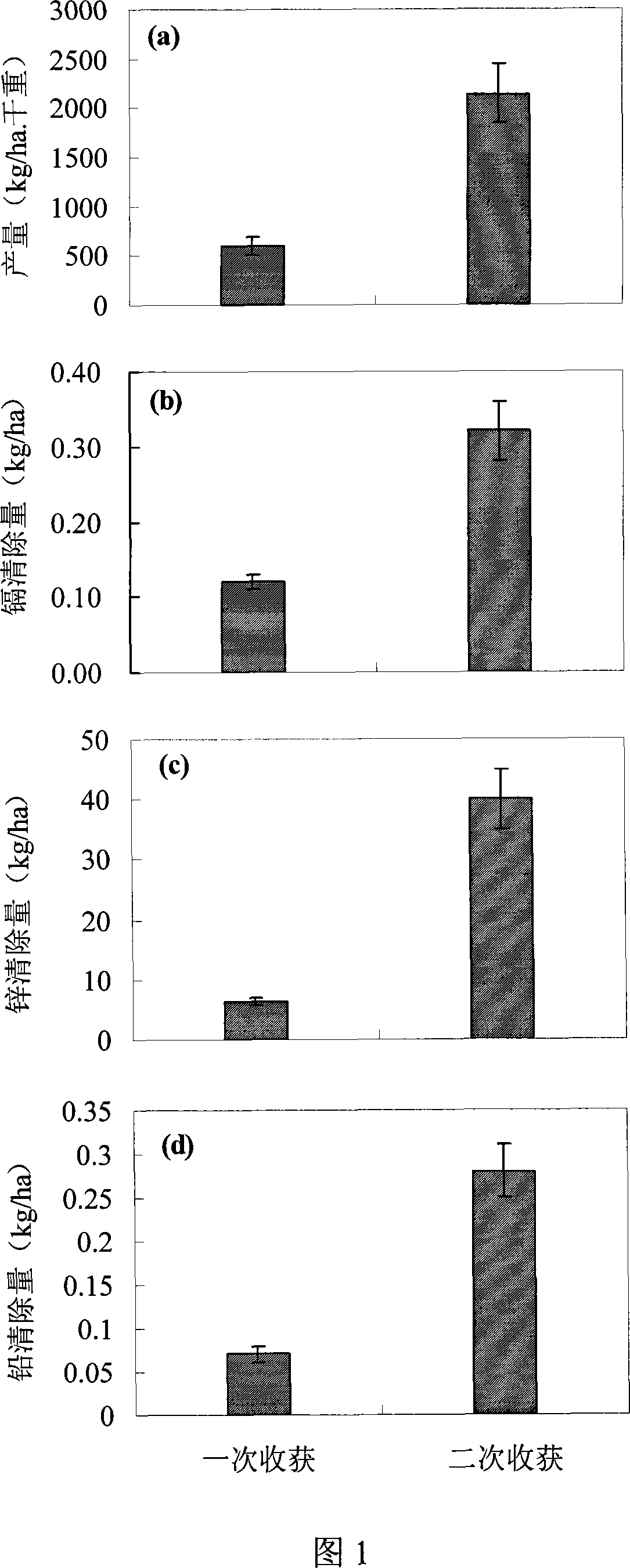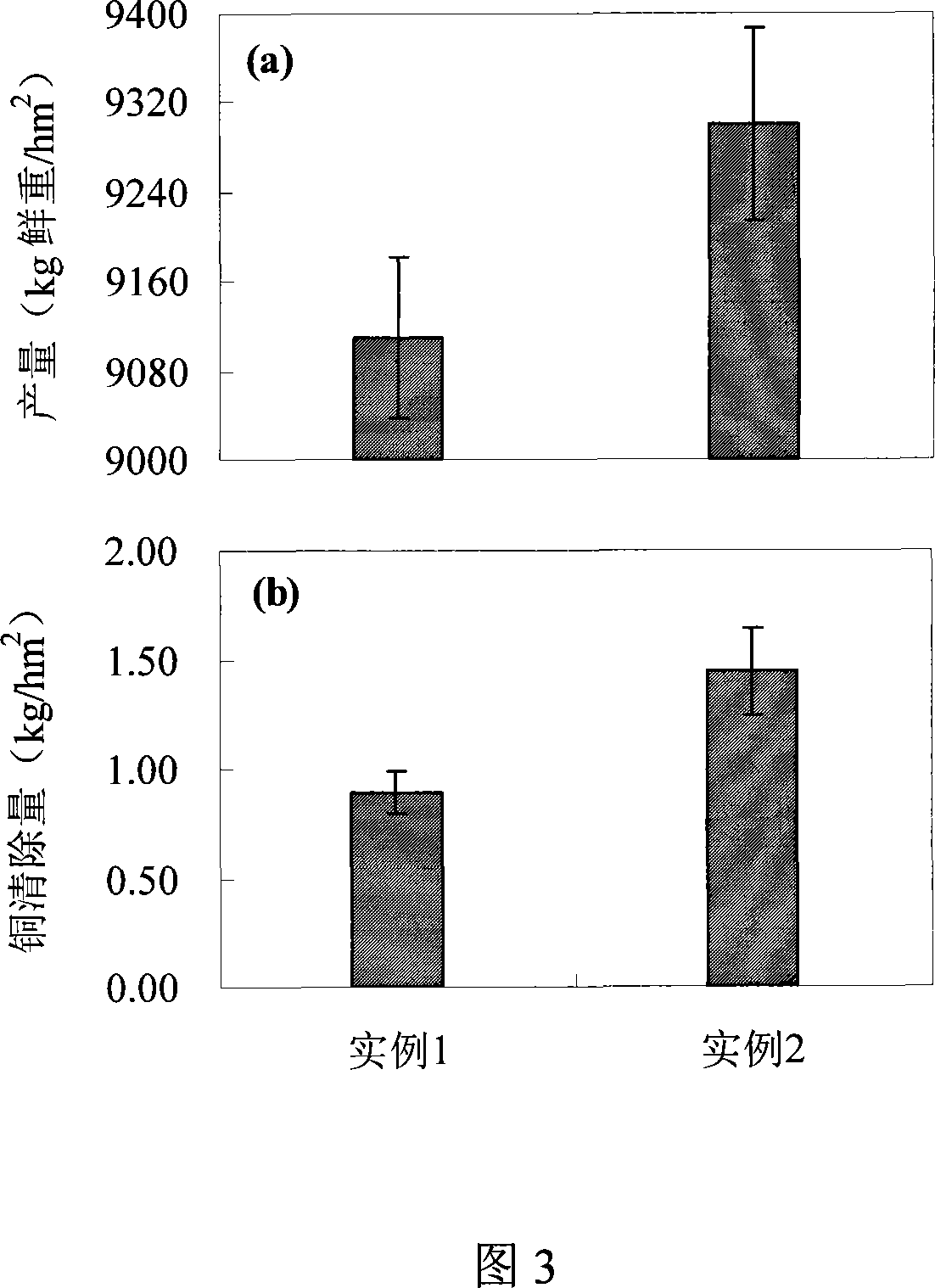Method for restoring vegetation system the soil of which is in combined pollution of vestalium, zinc, plumbi and cuprum
A technology of compound pollution and remediation methods, applied in the field of contaminated soil treatment, can solve problems such as toxicity, and it is difficult for ordinary plants to achieve rapid removal, and achieve the effect of small engineering amount, no damage to soil physical and chemical properties, and low investment.
- Summary
- Abstract
- Description
- Claims
- Application Information
AI Technical Summary
Problems solved by technology
Method used
Image
Examples
Embodiment 1
[0023] Intercropping sedum sedum and A. haizhou in compound polluted soil containing zinc 2001mg / kg, cadmium 21.15mg / kg, lead 1503mg / kg, copper 1435mg / kg, applying nitrogen, phosphorus and potassium fertilizers, and managing according to traditional crop management methods during the growth period. The aboveground part of Sedum sedum is harvested 4 months after the first transplant, the seedlings are replenished after harvest, and the second harvest is carried out 3 months later, and the sedum haizhou is harvested after 10 months of growth. It has been determined that after the first harvest, the dry matter yield of Sedum sedum is 600kg / hm 2 , the content of cadmium in the aboveground part is 207mg / kg, the content of zinc is 10587mg / kg, and the content of lead is 117mg / kg, and the cadmium, zinc and lead taken away from the soil are 0.12kg / hm 2 、6.35kg / hm 2 and 0.07kg / hm 2 (See Figure 1), after the second harvest, the dry matter yield of Sedum sedum is 2141kg / hm 2 , the cont...
Embodiment 2
[0025] Intercropping Sedum sedum Sedum Sedum and A. haizhou in complex polluted soil containing 2001mg / kg cadmium, 21.15mg / kg cadmium, 1503mg / kg lead, and 1435mg / kg copper, apply nitrogen, phosphorus, potassium and organic fertilizers, and follow traditional crop management methods during the growth period to manage. The aboveground part of Sedum sedum is harvested 4 months after the first transplant, the seedlings are replenished after harvest, and the second harvest is carried out 3 months later, and the sedum haizhou is harvested after 10 months of growth. It has been determined that after the first harvest, the dry matter yield of Sedum sedum is 1278kg / ha, the content of cadmium in the aboveground part is 193.5mg / kg, the content of zinc is 10000mg / kg, and the content of lead is 177mg / kg. Cadmium, zinc and lead are 0.24kg / hm respectively 2 、12.78kg / hm 2 and 0.23kg / hm 2 (See Fig. 2), after the second harvest, the dry matter yield of Sedum sedum is 3219kg / ha, and the cadmi...
PUM
 Login to View More
Login to View More Abstract
Description
Claims
Application Information
 Login to View More
Login to View More - R&D
- Intellectual Property
- Life Sciences
- Materials
- Tech Scout
- Unparalleled Data Quality
- Higher Quality Content
- 60% Fewer Hallucinations
Browse by: Latest US Patents, China's latest patents, Technical Efficacy Thesaurus, Application Domain, Technology Topic, Popular Technical Reports.
© 2025 PatSnap. All rights reserved.Legal|Privacy policy|Modern Slavery Act Transparency Statement|Sitemap|About US| Contact US: help@patsnap.com



